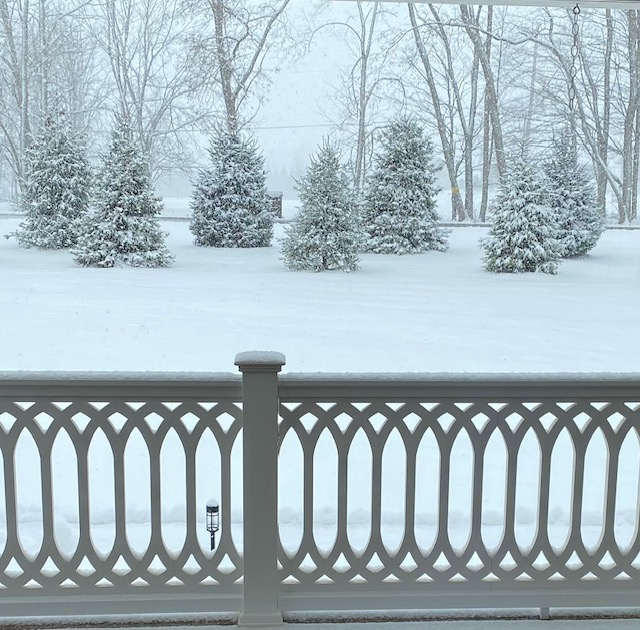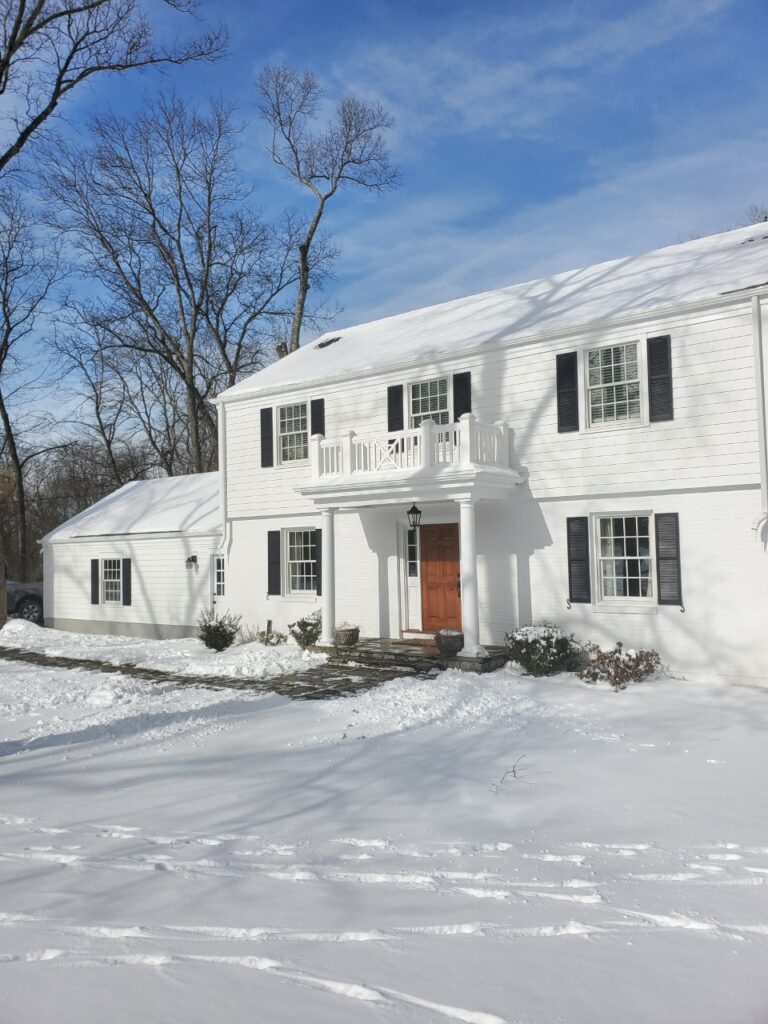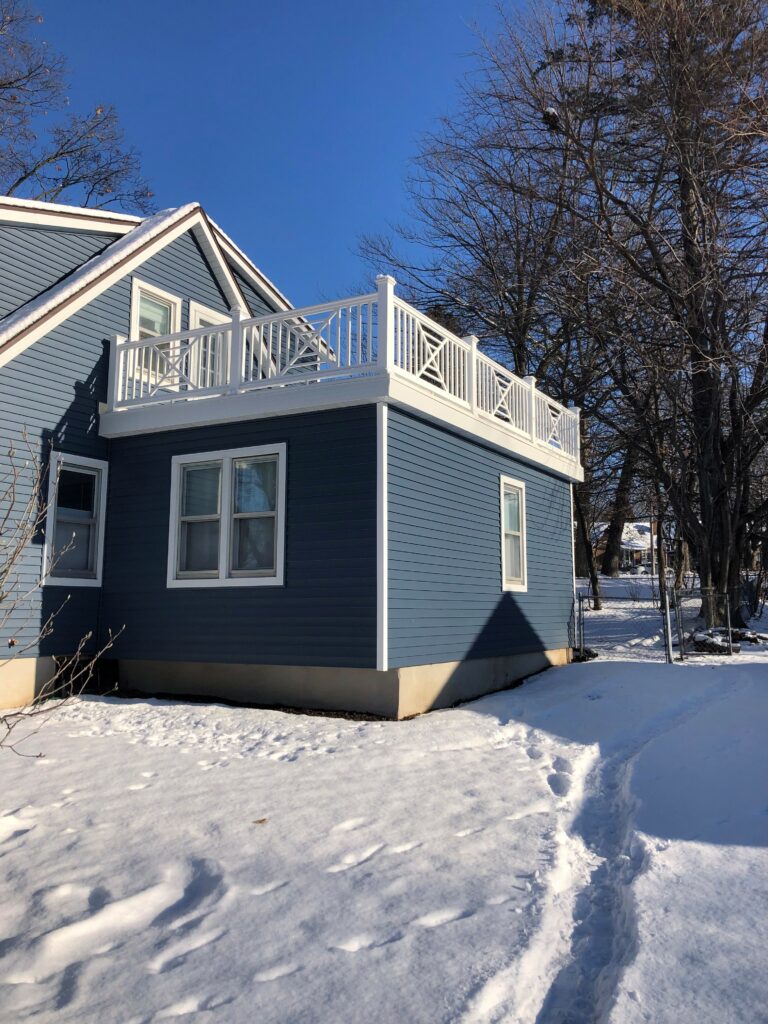How Solid Cellular PVC and Composite Materials Hold Up to Cold Winter Temperatures
As winter settles in and temperatures plummet, homeowners and builders alike may wonder how various materials used in construction and home improvement projects stand up to the harsh cold. Among the materials growing in popularity for outdoor applications are solid cellular PVC (polyvinyl chloride) and composite materials. These are the materials that all of our railing components are made from. But how do they hold up in the freezing conditions of winter?
 In this blog post, we’ll explore how solid cellular PVC and composite materials perform in cold winter temperatures, covering factors like durability, expansion and contraction, and maintenance concerns.
In this blog post, we’ll explore how solid cellular PVC and composite materials perform in cold winter temperatures, covering factors like durability, expansion and contraction, and maintenance concerns.
Solid Cellular PVC: The Cold-Resistant Wonder
Our design panel inserts like the Chippendale and Cathedral Picket are made from Solid cellular PVC. Solid cellular PVC is a synthetic material made by combining PVC resin with a foaming agent. This unique combination creates a lightweight yet strong material that mimics the appearance of wood but doesn’t have the inherent drawbacks of natural wood, such as warping, rotting, or insect infestations. But how does it perform when temperatures dip below freezing?
1. Durability in Cold Temperatures
Solid cellular PVC is known for its impressive resilience in extreme weather conditions. Unlike wood, which can absorb moisture and expand or contract with temperature changes, PVC is non-porous. This means it doesn’t absorb water, which is especially beneficial in freezing temperatures. In areas where winter rain or snow is common, this characteristic ensures that PVC won’t swell, crack, or warp due to water absorption. It remains unaffected by the cold and holds up well over time.
2. Expansion and Contraction
One thing to note about PVC is that like most materials, it does expand and contract with temperature fluctuations. However, solid cellular PVC is engineered to handle this more effectively than wood or other materials. During the winter months, when temperatures are at their lowest, PVC will contract slightly. This doesn’t usually cause significant issues, but proper installation is key. Leave small gaps between pieces to allow for expansion and contraction without risk of buckling.
3. Low Maintenance
One of the greatest benefits of using solid cellular PVC during the winter months is its low maintenance. PVC doesn’t require sealing or painting, as it resists cracking, peeling, or fading even after exposure to cold temperatures and UV rays. This is a big plus in regions where snow and ice are common, as you won’t need to worry about repainting or replacing damaged sections.
Composite Materials: Performance in Winter’s Grip
Composite materials, often made from a mix of wood fibers and plastic resins, are another popular choice for outdoor applications like decking, cladding, and fencing. We sell the Timbertech classic composite top and bottom railing made from this material. These materials offer the best of both worlds—natural wood appearance with the durability and weather-resistance of plastics. But how do composite materials stack up against the winter chill?
1. Impact Resistance
Composites are designed to be strong, and this strength is often tested when temperatures drop. In colder climates, some composite decking materials can become slightly more brittle, increasing the chance of cracking or chipping if subjected to sudden impact. However, many modern composite products are formulated to remain flexible and resilient in lower temperatures. They may not be as indestructible as solid cellular PVC, but they’re still relatively tough when it comes to enduring freezing temperatures.
2. Expansion and Contraction
Just like PVC, composite materials expand and contract with temperature changes. The rate of this expansion can vary depending on the specific mix of wood fibers and plastic in the composite. While some composites are designed to withstand colder climates by minimizing this expansion and contraction, others may show slight gaps or changes in size during the winter months. The best way to combat this is through proper installation, leaving the recommended gaps between boards to prevent warping or buckling.
3. Moisture Resistance
A major benefit of composite materials in winter is their superior resistance to moisture. Because composites are a blend of wood fibers and plastics, they resist the absorption of water much better than traditional wood. This is crucial in cold climates where moisture can freeze and thaw repeatedly, potentially causing wood to crack or warp. Composites, particularly high-quality ones, are designed to shed water, reducing the risk of damage from freezing conditions. However, lower-quality composites may still be susceptible to issues like mold or mildew growth if water is trapped in the fibers.
4. Maintenance During Winter
Just like PVC, composites are low-maintenance materials. They don’t need to be stained, sealed, or painted regularly, which is a huge advantage during the winter months when weather conditions make exterior maintenance more difficult. Snow and ice can be brushed off composite decking or siding, and the material will not suffer damage from freezing precipitation. However, homeowners should avoid using harsh chemicals (like de-icing salts) on composite materials, as these can damage the surface over time.
Conclusion: Both Materials Hold Their Own in Winter
Solid cellular PVC and composite materials are both solid choices for building and renovation projects that will be exposed to winter conditions.
- Solid cellular PVC is virtually unaffected by cold temperatures, offering excellent resistance to moisture, cracking, and warping. It expands and contracts minimally, making it ideal for cold regions where temperature fluctuations are common.
- Composite materials, while slightly more prone to brittleness and expansion issues compared to PVC, still offer a robust solution for freezing conditions. They outperform wood in terms of moisture resistance and durability but require proper installation to mitigate temperature-driven changes.
Both materials offer substantial benefits when it comes to winter performance, with each offering unique advantages. Solid cellular PVC provides the ultimate protection against the cold and moisture, while composite materials strike a balance between wood-like aesthetics and long-lasting durability. Choosing between the two depends largely on the specific needs of your project, climate considerations, and aesthetic preferences. Either way, both materials are more than capable of holding up against winter’s worst.

